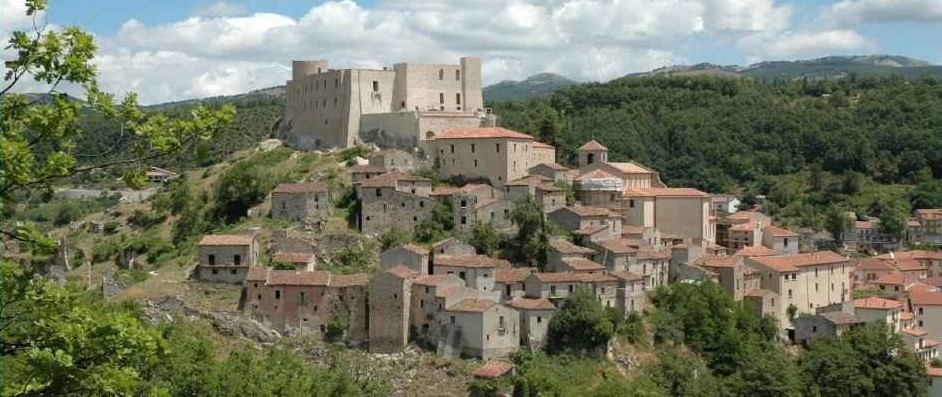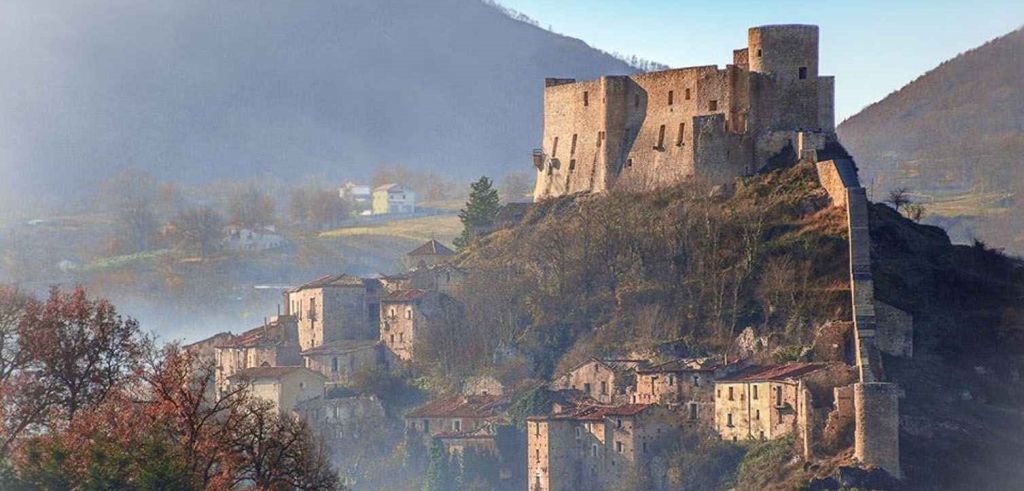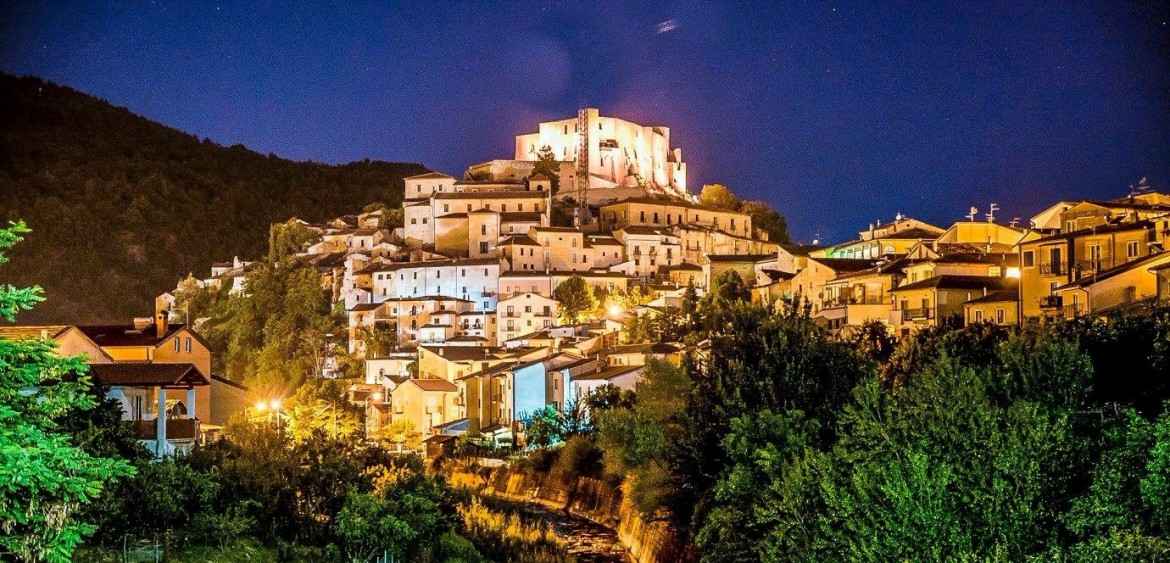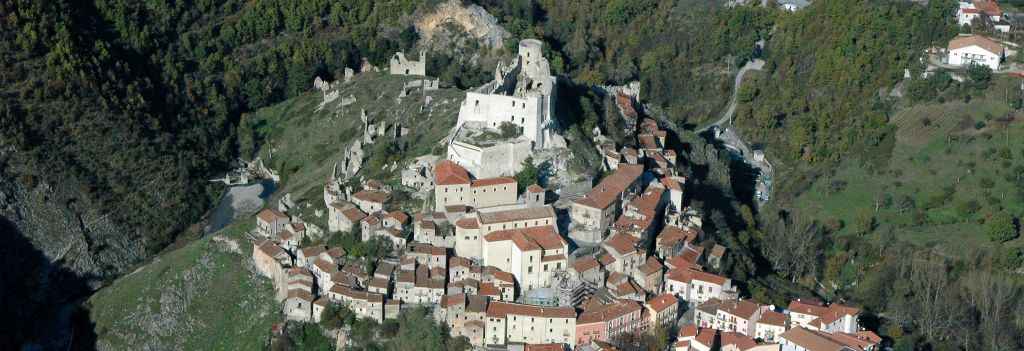



The origin of Brienza is almost certainly Langobard: the root of burg (fortified place), from the Latin toponym Burgentia, would support this hypothesis. The first nucleus seems to date back to the VII century A.D. The ancient village develops mainly after 1000, all around the castle.
The priest Giuseppe Paternoster (1823-1888), recounts in a written the events of the place where he was born and observed that
&faquo;not easy at all if not impossible, it is the origin of our town, being like that of many cities and towns of the Kingdom wrapped up in the mysteries of antiquity. Of Brienza there is no mention of any writer; nor are there traditions that lead us to the truth. The site, however, where it is edified, what now called ancient town around the castle, hints at those stormy periods, in which the continuous barbarian invasions forced the peoples to reduce themselves in places almost inaccessible, causing massacres and robberies.»
According to Giuseppe Gattini, Brienza was "called Burgentia and one would not be alien to the belief that it could have been a setting aside of later feudal burgansatic lands, or simply a village." It is among the few villages of Basilicata that has preserved its architectural structure of medieval village

Brienza has a historic center that is one of the most beautiful medieval villages of southern Italy: here, between narrow alleys similar to guts and steep climbs, before reaching the Castle you can admire the 'chiazzino', a very beautiful portal, the Via degli Archi and the Piazza del Municipio.
The Caracciolo castle di Brienza was probably an ancient fortress of the Angevin era, perched on a rock spur under which flows the stream Pergola, but of the building today remains only the entire donjon with attached the circular tower, typically Angevin made. At one time, many houses were leaning against the manor, in order to make it even more protected along the walls, according to the method of the Langobard fortifications as according to some historians, in reality, the original nucleus of this castle dates back to the seventh century. The Castle of Brienza was accessed by a staircase on an embankment that led to the entrance; according to an ancient legend the castle had 365 rooms, one for every day of the year.
The history of the castle and of all Brienza is strongly linked to that of the Caracciolo family, who bought it in 1428 making Brienza a very prestigious center in which it ruled until 1857. Since then, the castle passed into the hands of a series of different administrators, who began to sell various objects of the manor; the coup de grace to the construction was given by the several earthquakes that struck Brienza and Basilicata starting in 1857. Today, the castle and the ancient village of Brienza serve as a picturesque setting for all the events that take place in the country.

It is said that among the many characters that have been housed, over the centuries, at the Caracciolo Castle of Brienza (counts, ladies, nobles and knights), one in particular has left an indelible mark in the memory of all. This is Bianca da Brienza, a beautiful woman who lived in the castle around the middle of XIV century.
Bianca was a lady who loved to live in luxury and ostentation, and it seems that she possessed a huge treasure, made of gold, precious stones, trinkets and jewelry: of these last, Bianca was literally in love, so much so that, during the parties and receptions that were often held in the Castle of Brienza, she appeared dressed only in jewels, and that, sometimes, she bathed in a tub full of gold coins.
The legend also says that the treasure was kept in the 366th room of the castle, which was a secret and inaccessible room, of which only Bianca and her faithful handmaid knew the way to access it. However, one day, while traveling to Amantea, Bianca was kidnapped by pirates and taken to Algiers, where a rich pasha fell in love with her and kept her with him; from that moment, all traces of Bianca da Brienza were lost, and above all nothing was known of her treasure, which, it is said, is still hidden in the secret room of the castle, still untraceable today, and who will be lucky enough to find this room, can take possession of the treasure of Bianca.

In 1644 the castle was the "theater" of another intricate story. The owner of the castle was the Marquis Rodolfo, forced by financial necessity to give the castle and the surrounding estate to Baron Tiburzio, who left it temporarily for him to use. Rodolfo, in love with Clorinda, his pupil and guest (in turn she was in love with the farmer Eugenio) after learning from his confidant Enrico of a love encounter between Clorinda and Eugenio, angered, drove Eugenio away. The latter revealed that he was in fact the baron of Laurente, who was charged by Clorinda’s brother, in exchange for her hand, to find out how Rodolfo treated her, having had an inkling that the marquis had dissipated all his sister’s substances and was in debt.
Enrico advised the marquis to suppress the fake Eugenio, but in the duel that followed and that took place between the confidant and Eugenio, it was Enrico who had the worst. Clorinda and Eugenio married and forgave the Marquis all his wrongdoings.
These stories, legendary the first, taken from the opera "Rodolfo da Brienza" (drama in three acts, set in the castle of Brienza and without historical foundation; with a libretto by Domenico Bolognese and music by Achille Pistilli, was performed for the first time in the Royal Theatre of the Fund of Naples in 1846) the second, introduce us in the castle of Brienza, today reduced to ruins, but a throbbing time of life and more or less great existential dramas.
